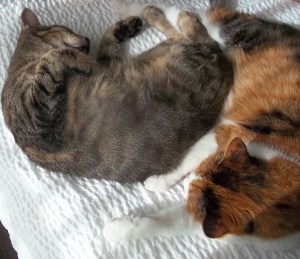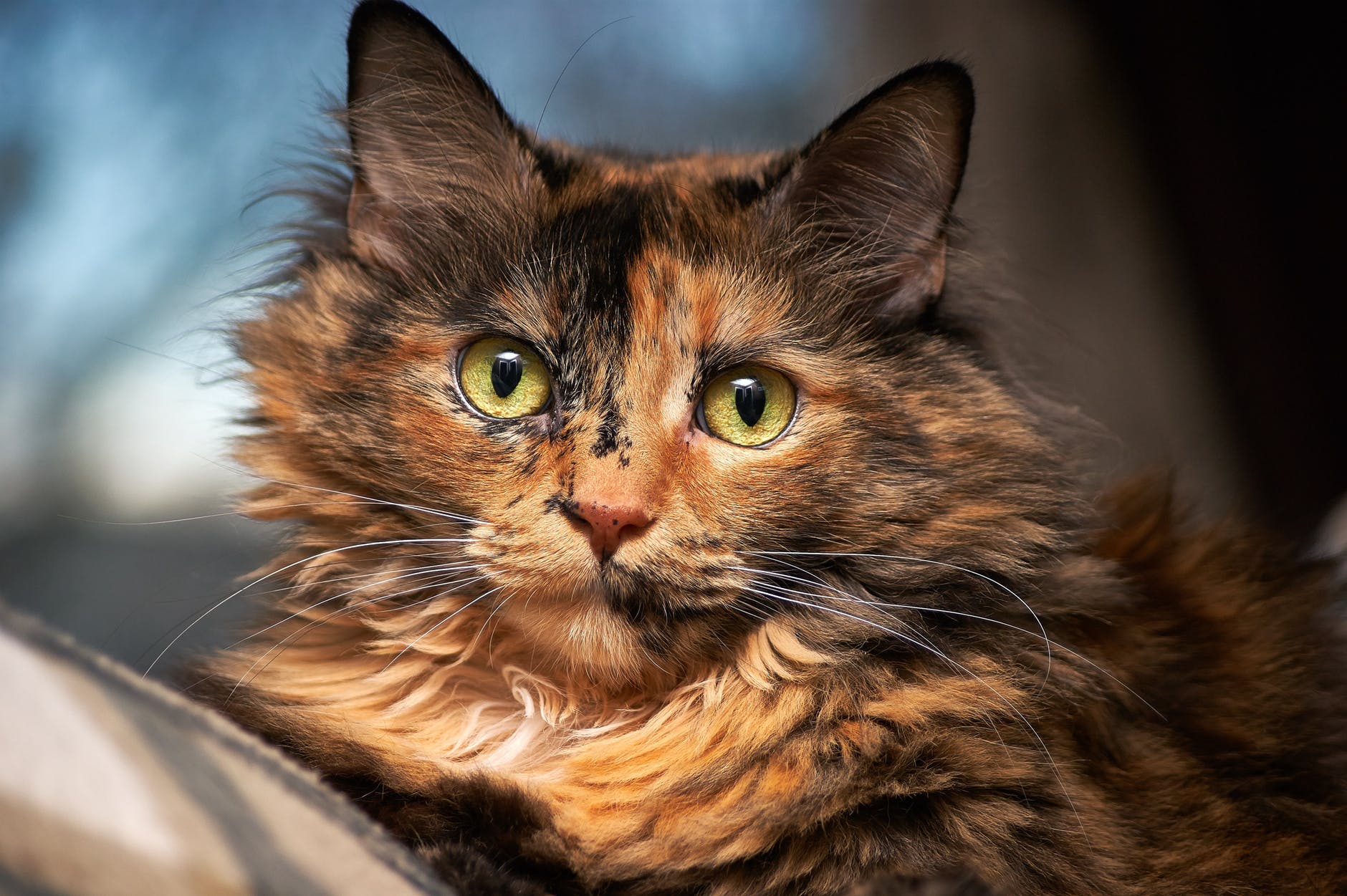
Robert Fulghum tells us that he learned everything he needed to know in kindergarten. I can’t go all the way with him on #1—Share everything—especially when it comes to Facebook, but I’m a solid believer in #12—Take a nap every afternoon. (Well, and #9—Flush.)
I love naps—the sensual pleasure of snuggling into my bed in a cozy little nest of pillows, sheets, and blankets; the quiet purr of the fan and the cat who perches on my hip; the knowledge that, for a time, I can let go of the cares of the day; the promise of renewed spirit and energy; the satisfaction of turning off my phone.
Two of the best ways that I know of improving my mood are having a meal and taking a nap. The one often follows closely on the other, a phenomenon I am told is called “postprandial torpor.” (I’ve often wished I could call in sick to work and claim that affliction. Or “rhinotillexomania.” They sound so serious. But if anyone at your workplace knows Latin, you’re busted. (Which they actually did at one place I worked.) But I digress.)
Naps, however, are part of the reason that I can no longer work regular hours in a regular office. I find that bosses get upset if you take the phrase “break room” too literally. In the past, I’ve contemplated keeping a sleeping bag under my desk, but that would never work. Let’s face it—I snore. Prodigiously. Someone would be sure to notice, and object. (When I was traveling with my mother, she used to beg me to let her get to sleep before I nodded off. But I digress again.)
Fortunately, I work at home, so breaks and naps are entirely my own choice, except in case of deadlines. The transition from desk chair to bed is easy. I’m usually already wearing my jammies, and the commute is just up the stairs. (I can’t nap on the couch. It’s too uncomfortable. I used to be able to nap face-down on an airline tray table. This was useful because the flight attendant, seeing me, would think I was dead and leave me alone for the rest of the flight for fear of alarming the other passengers. But I digress yet again.)
Unfortunately, I’m not able to take “cat naps”—a misnomer if I ever heard one. My cats sleep on average 18 hours a day, and invariably right where a human wants to walk or sit. One of my cats even snores—daintily, but audibly. And no, it’s not a purr. (We’ve been thinking of getting a tiny CPAP machine for her, but we think she’d object to the mask. And cats have unpleasant ways of making their objections known. If you have a cat, you know what I mean. But I digress some more.)
Short, 20-minute naps do me no good. They don’t refresh me at all. In fact, they leave me more muddle-headed than ever. But the real reason I can’t take short naps is that it often takes me 20 minutes or more, usually of reading, to fall asleep. Since that’s the case, it’s hardly worth sleeping less than an hour or two.
But some of the time, even two hours of napping doesn’t do the job. Hence I have invented the Mega-Nap, of at least four hours. Mega-Napping doesn’t usually interfere with my nighttime sleep, either. On one memorable occasion, I Mega-Napped for a good six hours, and woke at 9:30 p.m., just in time to go back to bed and sleep for another 10 hours, giving the cats a run for their snoozes. I also suffer from Nap Attacks, when I hit the wall—hard— and simply must nap, collapse into a heap, or bite someone’s head off. Napping is usually the wisest choice.
With apologies to Robert Fulghum, I do see one glaring difference between kindergarten naps and grown-up naps. Children resist them and resent them and get cranky when they have to take one. Adults seek them and savor them and get cranky if they can’t have one.



 No, this isn’t going to be a post about me and my husband, although it’s true that we’re growing older (every day) and we’re still together (after nearly 40 years).
No, this isn’t going to be a post about me and my husband, although it’s true that we’re growing older (every day) and we’re still together (after nearly 40 years). My cat has a magnet in her nose. My husband does not.
My cat has a magnet in her nose. My husband does not. Moving is always a challenge. Moving with cats doubly so. Yet, we have accomplished it thrice in a month. And all of us, feline and human, survived. Not necessarily happily, but we survived. The cats were the least happy of all and we tried our best to remedy that situation.
Moving is always a challenge. Moving with cats doubly so. Yet, we have accomplished it thrice in a month. And all of us, feline and human, survived. Not necessarily happily, but we survived. The cats were the least happy of all and we tried our best to remedy that situation. furniture. My husband put small potted plants on the windowsill where they could knock them off while admiring the fifth-floor view. And they loved the bed, where they took up residence. But all in all, there wasn’t much for an active cat to do.
furniture. My husband put small potted plants on the windowsill where they could knock them off while admiring the fifth-floor view. And they loved the bed, where they took up residence. But all in all, there wasn’t much for an active cat to do.



 Other things we do for cats are less ridiculous. My husband and I, and a number of people we know, have been trained and trusted with our cats’ medical procedures. Most people can give pills or liquid medicines, eye drops or ear drops at home. (Although even these duties are not for the faint of heart. One of our cats invented the sport of projectile drooling when given a pill.)
Other things we do for cats are less ridiculous. My husband and I, and a number of people we know, have been trained and trusted with our cats’ medical procedures. Most people can give pills or liquid medicines, eye drops or ear drops at home. (Although even these duties are not for the faint of heart. One of our cats invented the sport of projectile drooling when given a pill.)